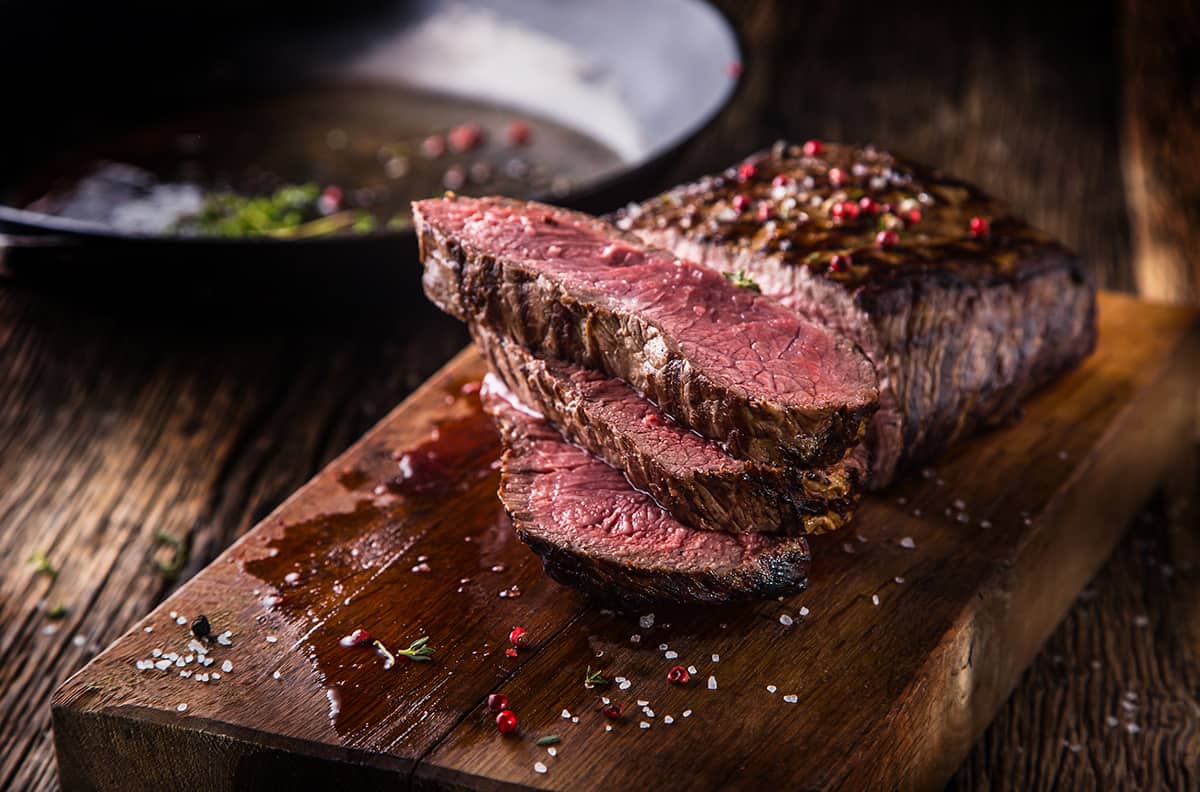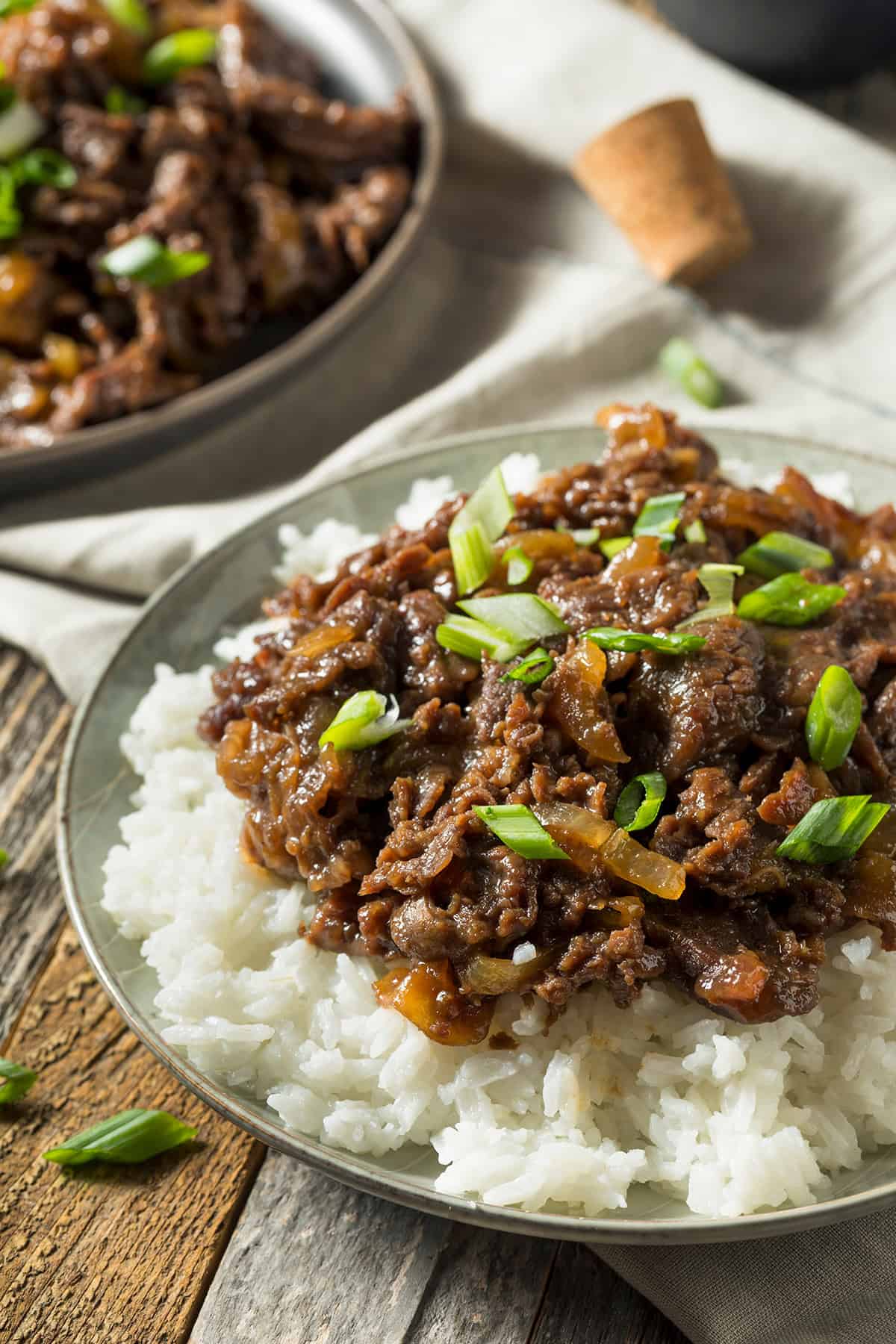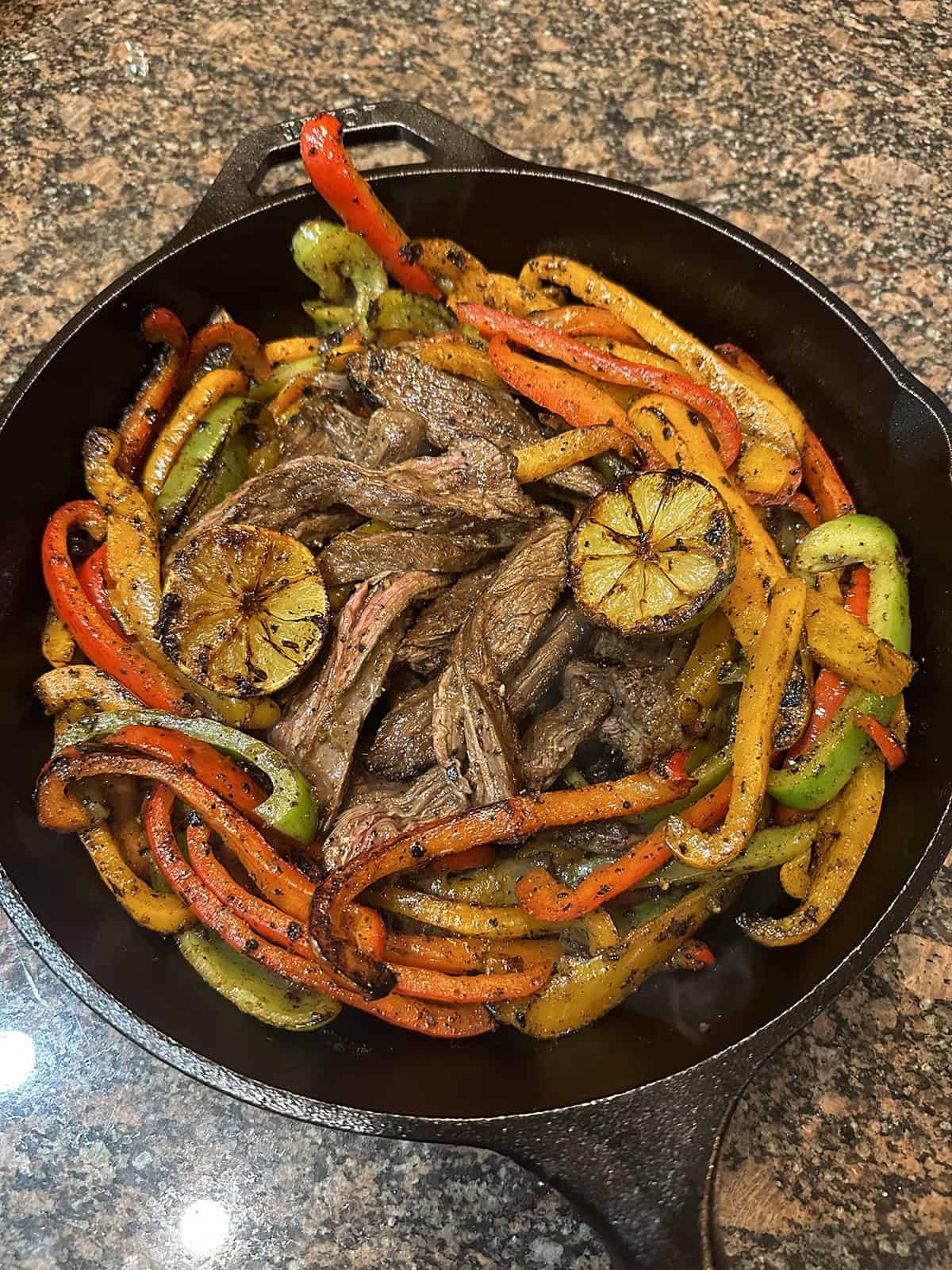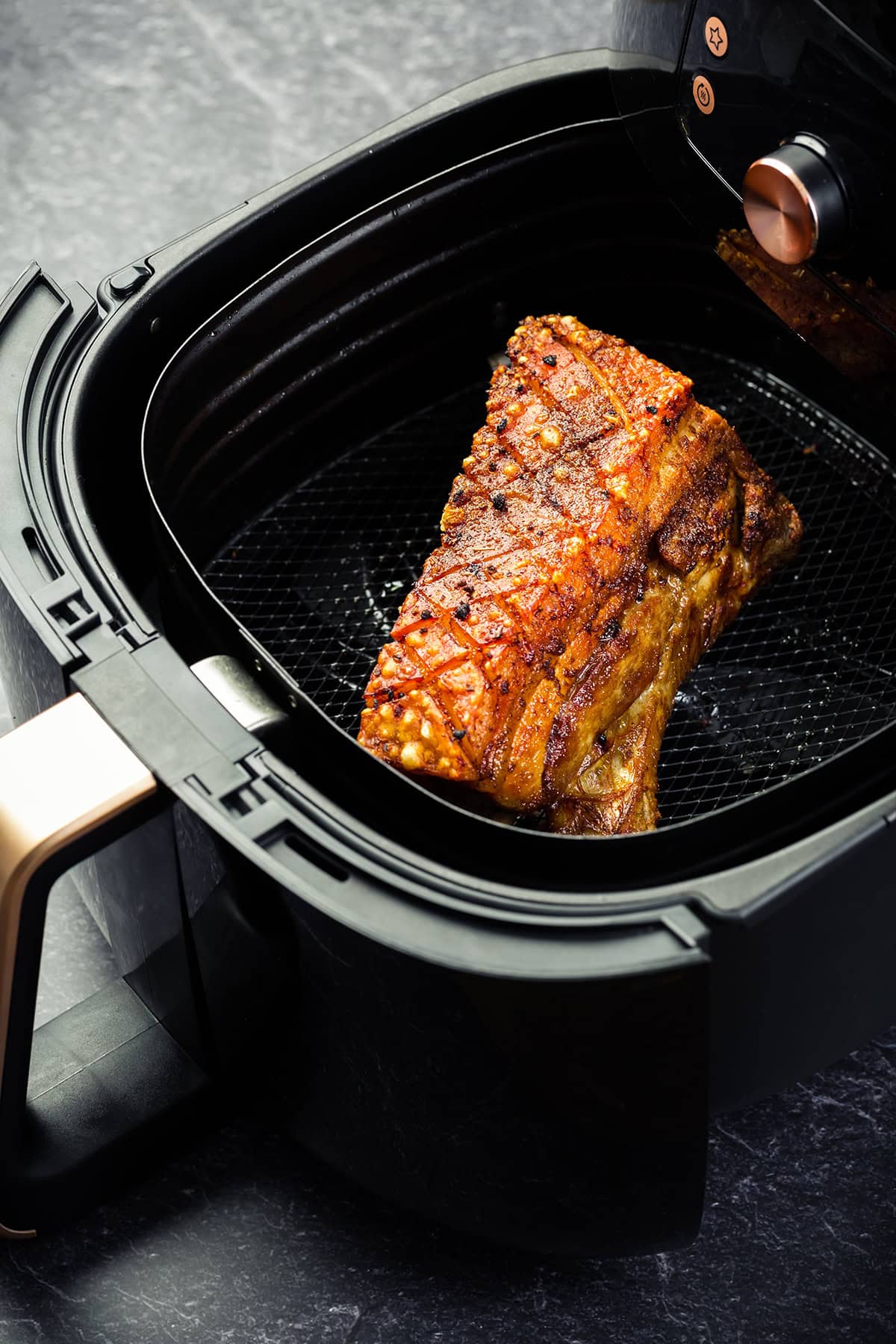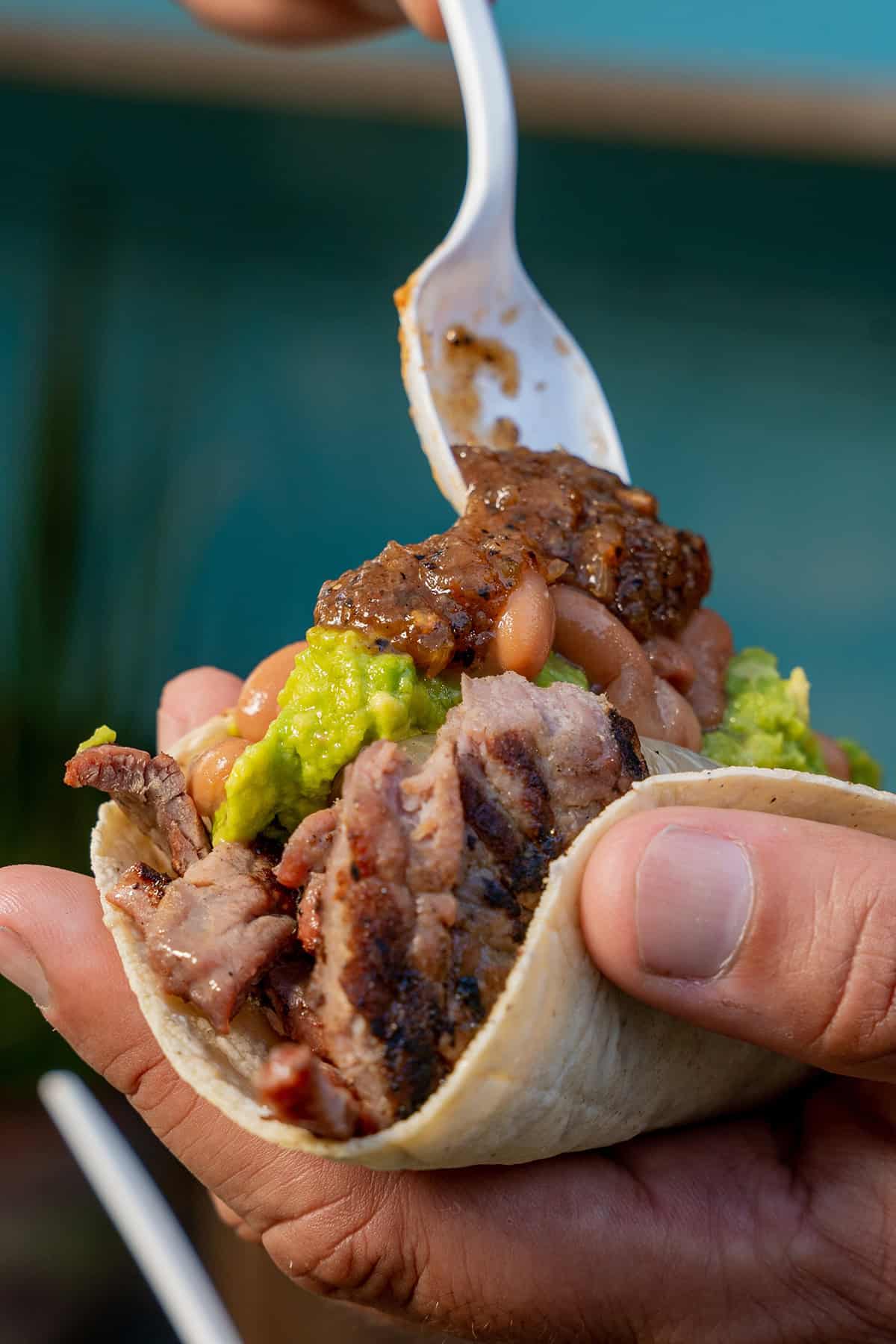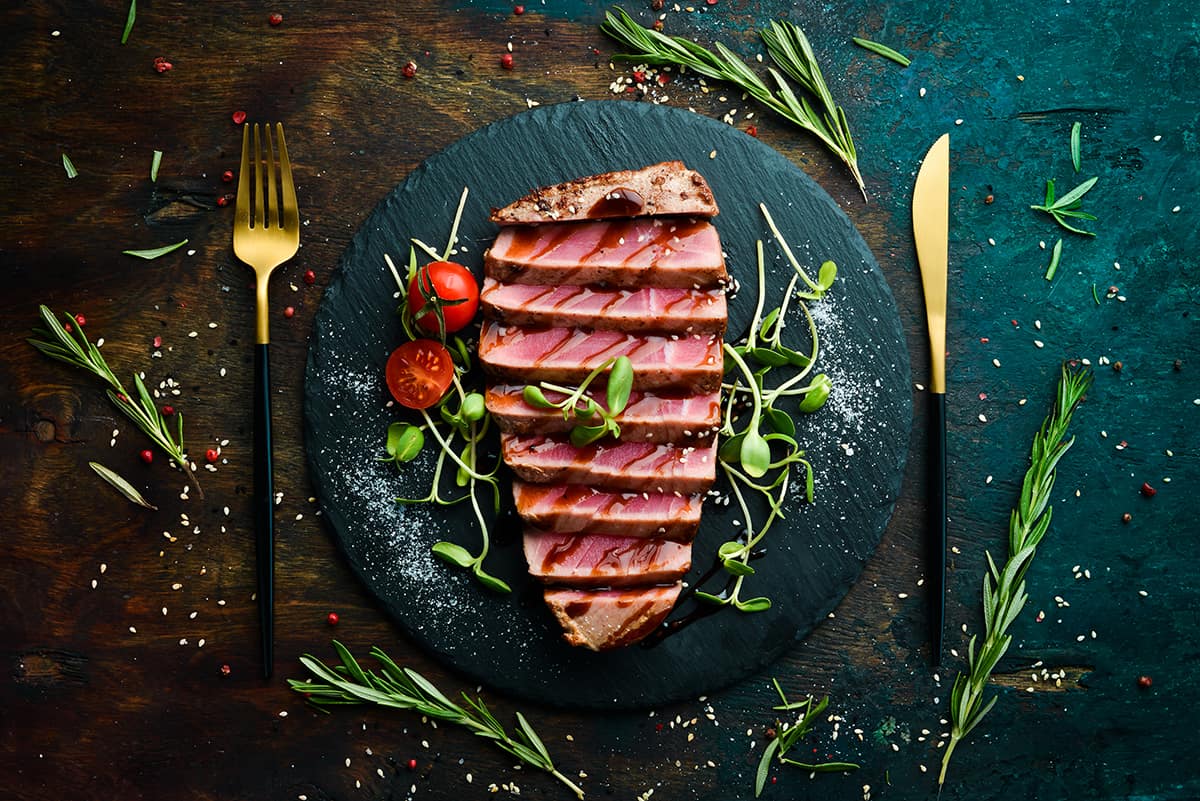There’s no such thing as having too much steak unless your doctor tells you to avoid red meats. However, if you’re as fit as a fiddle and can partake in the occasional steak, then you might want to pay close attention to the serving sizes.
You can tell a lot about a steak by its thickness. For instance, larger steak cuts may not just be wide but they’ll also be several times thicker than their thin-sliced counterparts. Even though most cuts of steak measure 1.5 inches (3.8 centimeters) in thickness, what other sizes can you get? And is bigger always better?
Below, I’ll cover the basics in steak thicknesses to help you decide whether a wider steak, a thicker steak, or all of the above will make for a hearty dinner.
Steak Thickness Chart
Believe it or not, there is a reason why butchers prepare cuts of steak the way they do. For the most part, a steak will measure 1.5 inches (3.8 centimeters) in thickness for all cuts—from New York strips all the way to filet mignons.
Below, you’ll find a table that describes the most common thickness ranges for the 6 primary cuts of steak. Many butchers might have several sizes on hand, but you’re more than welcome to ask your butcher to prepare a cut to any size you want.
| Steak Cut | Standard Thickness |
| Tenderloin | 1.5 to 3 inches
3.8 to 7.6 centimeters |
| New York Strip | 1.5 to 2 inches
3.8 to 5 centimeters |
| Porterhouse | 1.5 to 3 inches
3.8 to 7.6 centimeters |
| Ribeye | 1.5 inches
3.8 centimeters |
| Flank Steak | 1 inch
2.5 centimeters |
| Skirt Steak | 0.5 to 1 inch
1.3 to 2.5 centimeters |
Why Different Steak Cuts Have Different Thicknesses
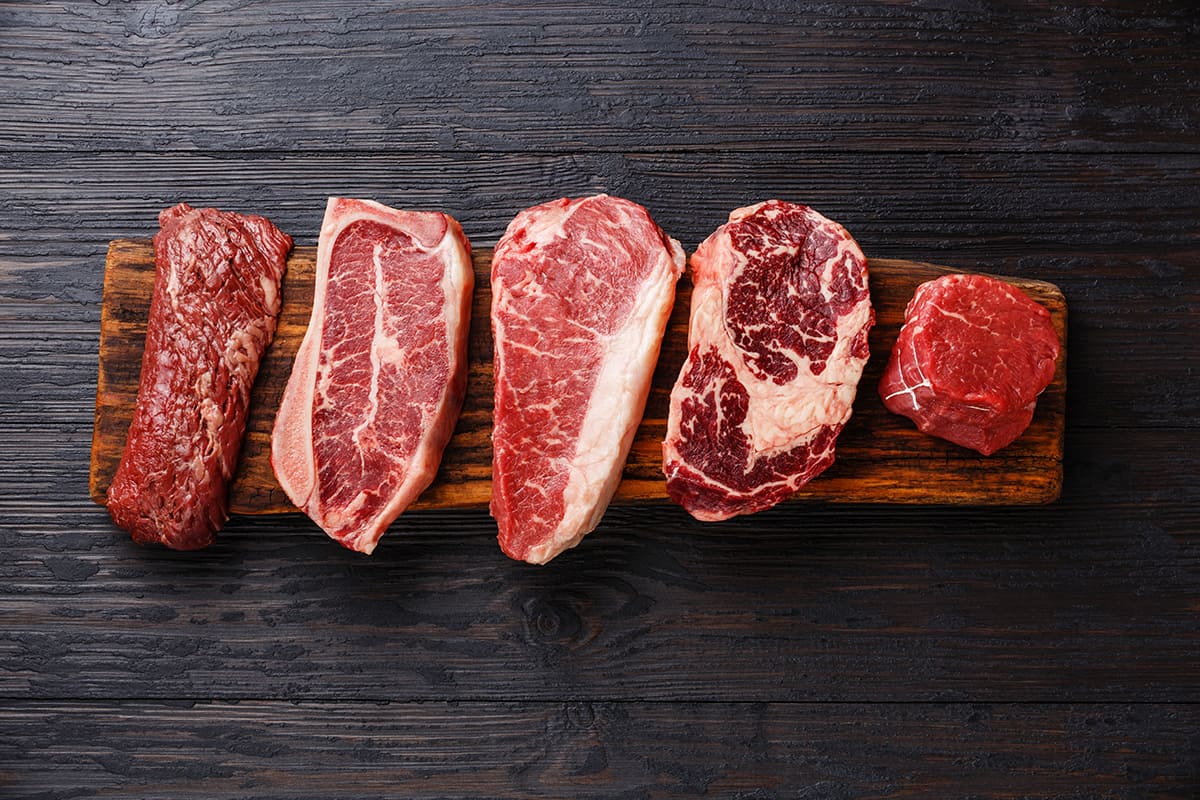
If you take a look at the chart above, you’ll find that different cuts of steak have various thicknesses. The tenderloin and the porterhouse have a maximum thickness of 3 inches (7.6 centimeters), while the skirt steak is the thinnest with a starting thickness of 0.5 inches (1.3 centimeters).
So, why do different steak cuts have different thicknesses?
On average, the 4 primary cuts—the tenderloin (filet mignon), the New York strip, the porterhouse, and the ribeye—should have a minimum thickness of 1.5 inches. The reason is that these cuts of meat come from larger parts of the cow, and, as such, will require longer to cook.
While you can get away with a 1-inch (2.5-centimeter) ribeye, it’s not recommended. If you cut a steak too thin, the heat from your skillet or ambient heat from a convection oven will cook the meat more quickly, giving the cook less control over the steak’s final outcome in terms of texture and flavor.
Conversely, if you cut a steak too thick, the exterior and interior of the steak will not cook evenly. By the time the inside is cooked to a beautiful medium-rare, the steak’s exterior may be burned to a crisp. This is the primary reason why all steak cuts, regardless of their width or diameter, should have a consistent thickness of around 1.5 inches.
Why Are Flank and Skirt Steaks So Thin?
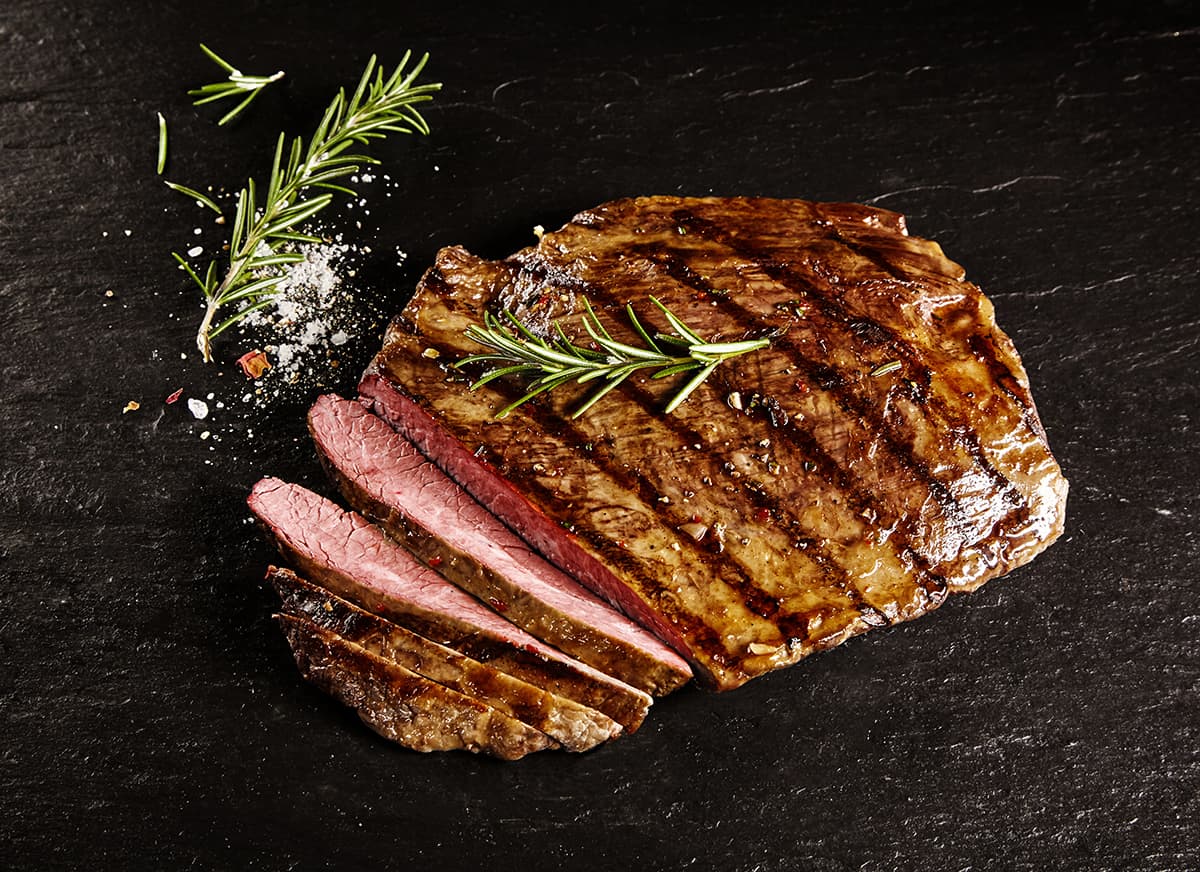
Flank and skirt steaks originate from the underside of the cow. Both cuts can be incredibly tough due to a lack of fat, but they contain lots of beefy flavor. Compared to the steaks, flank and skirt steaks are also among some of the most inexpensive cuts of beef.
Due to their grainy or chewy texture, flank and skirt steaks are typically cut thinner than other steaks. Since there’s very little fat to render, flank and skirt steaks are prone to drying out. So, butchers cut them into thin strips in order to cook quickly without removing all of the steaks’ moisture.
Can You Get Thinly Cut Steaks?
Apart from flank and skirt steaks, if you want thinner steaks, you will have to personally request your butcher to prepare them. As I mentioned earlier, because butchers stick to the 1.5-inch thickness rule for most steaks, you will have to place a request for other sizes.
Now, can you get thinner tenderloin, New York strip, porterhouse, and ribeye steaks? Yes, you can. However, cooking thinner cuts of fat-laden steaks can be tricky, especially for unseasoned cooks.
Due to its thinness, the steak will cook a lot more quickly. The risk is that cooking the exterior to perfection may leave the inside tough, chewy, and overcooked. However, you can avoid overcooking thinly cut steaks by doing the following:
Sear your steak on all sides at high heat until the steak is fully cooked
Sous vide your steak before searing it on high heat on a skillet.
If the goal is to cook a steak on a grill, then you should avoid using thin steak cuts, such as flank, skirt, and any other cut of meat under 1.5 inches thick. While the ambient heat from the grill can cook the interior of a steak to perfection, the outside may become overcooked and have an unpleasantly chewy texture.
Optimal Steak Weights
The weight of your steak will depend on the cut and its thickness. In general, a 1.5-inch-thick steak will measure around 8 ounces (227 grams).
However, if you opt for a thicker steak cut, the weight of the stick will increase to around 16 ounces/1 pound (454 grams), which is ideal for sharing between multiple diners.
Should You Sous Vide a Steak?
Sous vide is French for “in a vacuum.” It’s a cooking method that involves stuffing meats, fish, or even veggies in a vacuum-sealed bag and placing it in near-boiling water for long periods of time.
You can find out how the science of sous vide works here, but in short, the temperature of your meat (in this case, steaks) will not surpass the temperature of the water. Also, because there is no direct heat, the cuts of meat will retain all of their natural juices until you pluck them out of the bag.
Cooking sous vide will give you greater control over the internal temperature of your steaks, which is great if you opt for a thinly sliced porterhouse or tenderloin. You can also cook flank and skirt steaks using the sous vide method.
